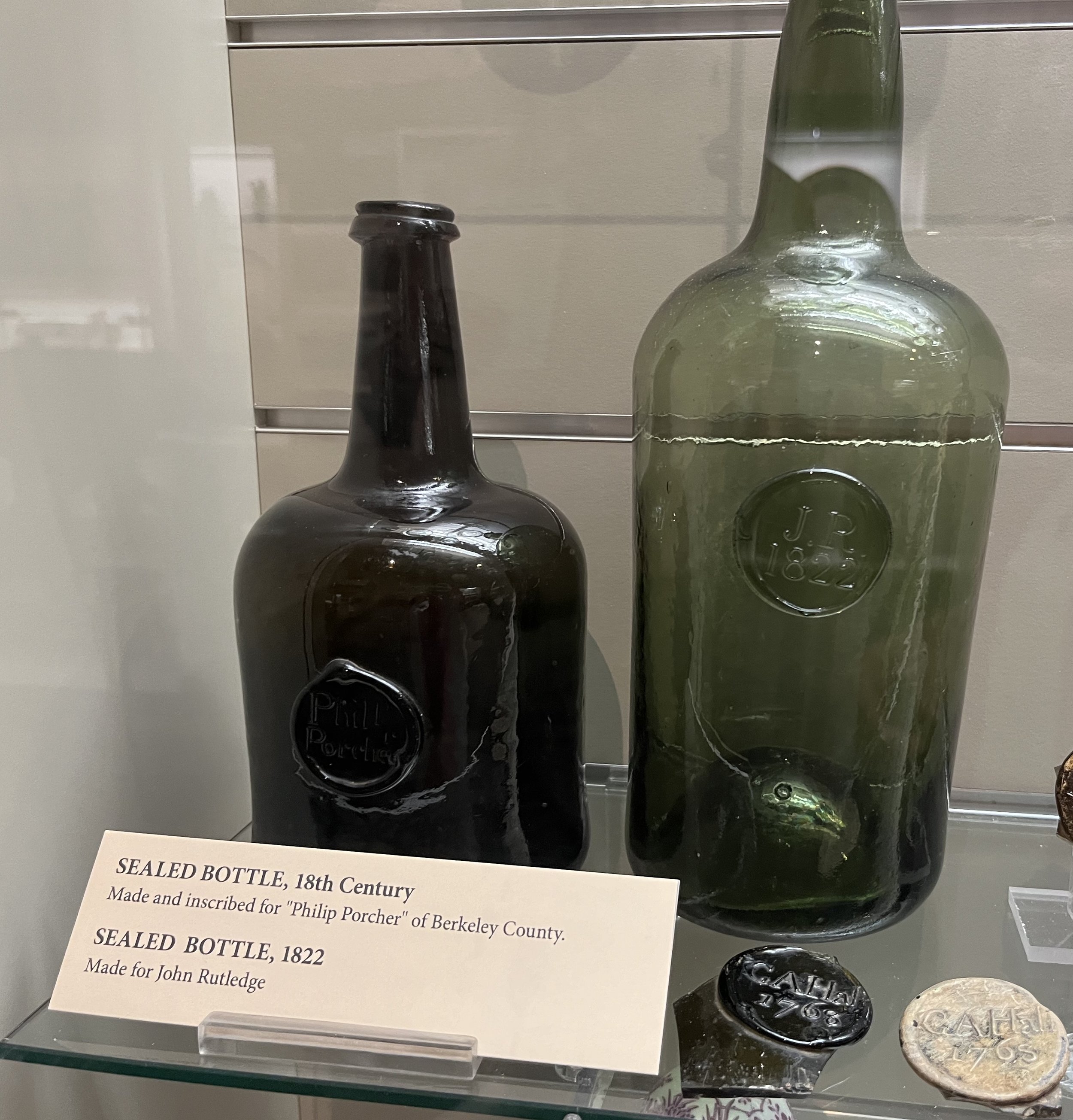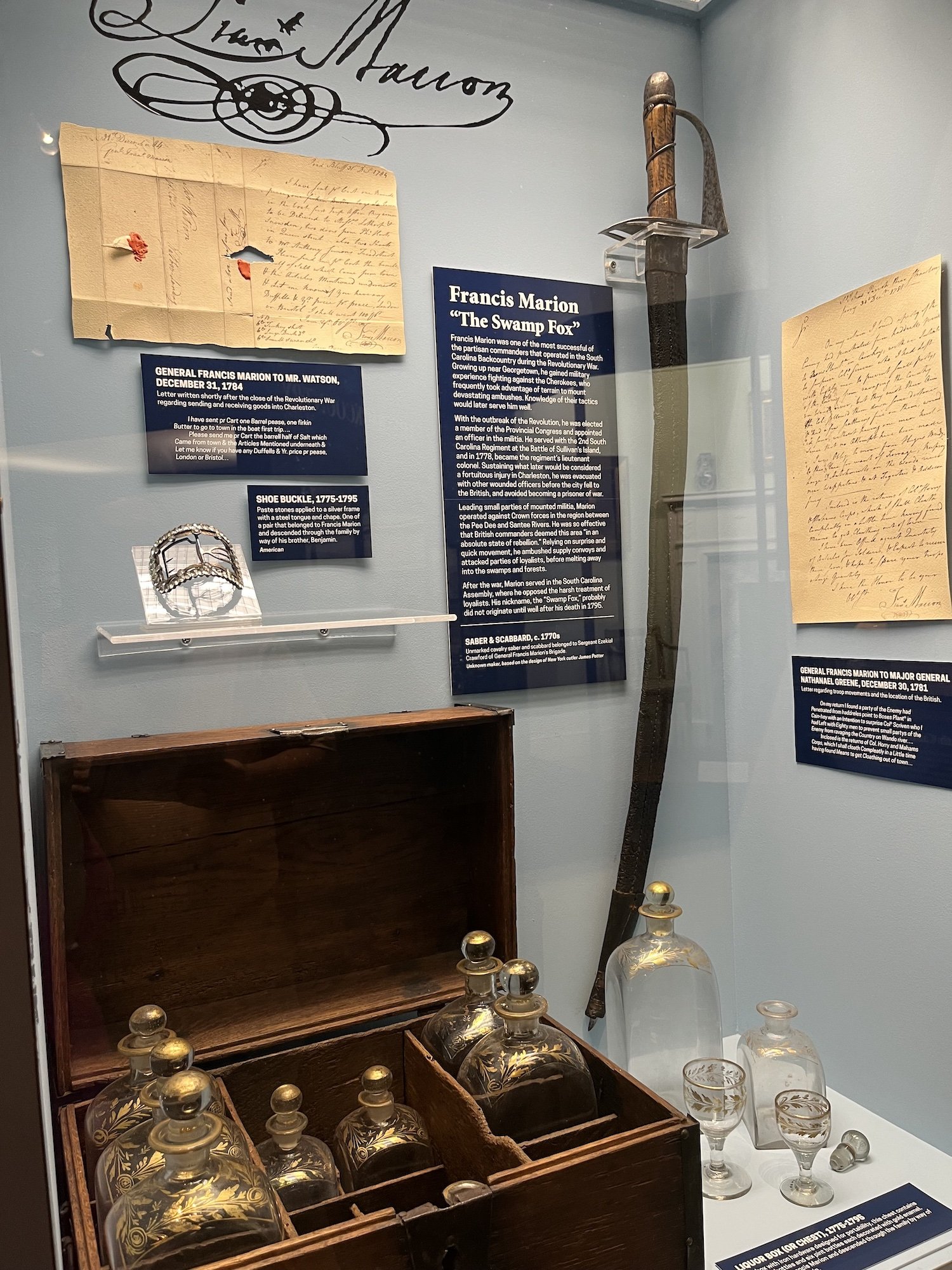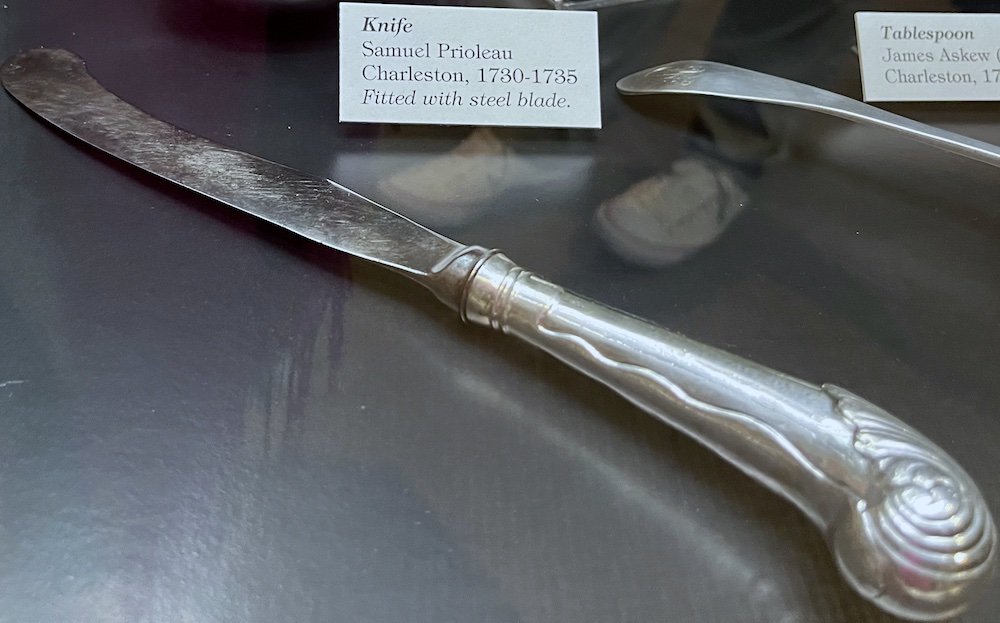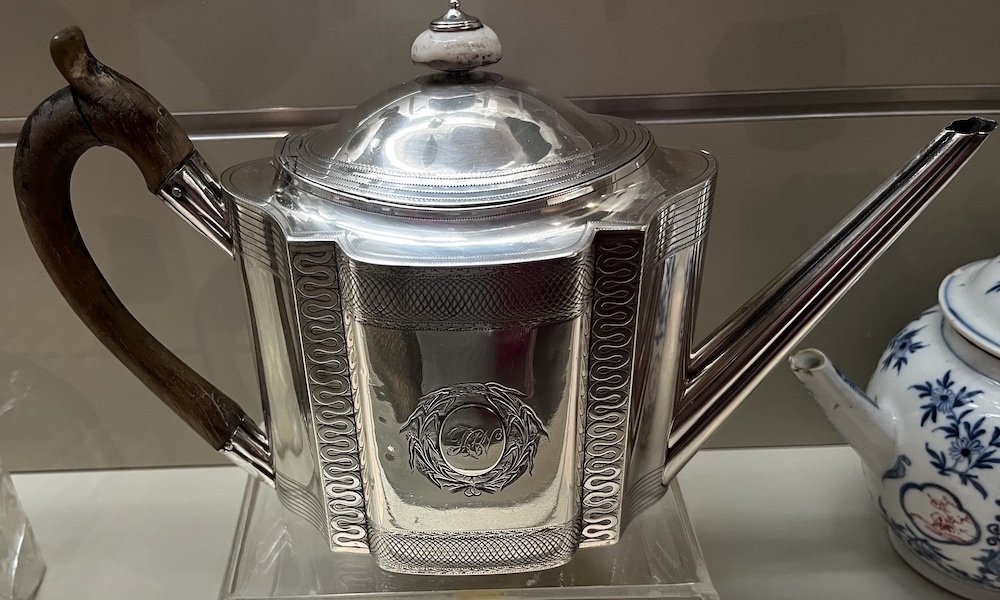Fête to feature Huguenot Treasures at The Charleston Museum
Today our Executive Director, Elizabeth F. Gay, and Chad Stewart, Curator of History at The Charleston Museum, had a walk through of the exhibit plans for April 12, 2024. Elizabeth shares her thoughts from the visit in today’s Happenings.
The Charleston Museum, Charleston, SC
Chad Stewart, Curator of History at The Charleston Museum with the Society’s Elizabeth F. Gay.
My love of The Charleston Museum began when I was a small child visiting the massive building on Rutledge Avenue where the museum was once located in what was Thomson Auditorium. Countless Brownie, Girl Scout and school visits along with birthday parties brought us to this treasured museum and it never disappointed. There used to be garden club sales on the front lawn of the building which were a perfect opportunity to snap up a desired caméllia or other shrub for one’s garden. I will never forget the hardwood floors and how they squeaked when we walked around, the enormous ostrich egg in the glass case and so much more. The Bragg Box which could come to school or be pulled out when we visited for childhood events was such a great way to share the treasures of the museum with little ones. When the museum moved to the Meeting Street location, in addition to the exhibits, we would enjoy old black and white movies shown in the auditorium and numerous parties were held in the courtyard. This museum has been a lifelong love for many who live in and visit Charleston. Since 1773 the museum has been collecting and preserving pieces of our shared history.
As we began planning for the Fête des Huguenots, we knew we wanted to include The Charleston Museum as a special exhibit opportunity for our members. And today it was a complete pleasure to have an advance meeting with Chad Stewart to preview and discuss the exhibit details. Chad is a graduate of Clemson University with a M.A. in History and he will be our guide for the tour. When you meet Chad you will find his love of history contagious and I expect he will be a very enjoyable guide for our tour. I also have a little favoritism for him as a Clemson Tiger. I am so thankful to our Board member, Mrs. Margaret Garrett, for connecting us with Chad in order to plan this special opportunity.
Huguenot Treasures
The dinner service pictured below stops you in your tracks. The hibiscus, passionflower and pomegranate decoration is so vibrant and meticulously painted. It truly lifts off the plate and delights the eye. Round place mats of the same design are available in the museum’s gift shop. Chinese export porcelain was very popular in 18th c. Charleston and this service is a fine example. Chinoiserie decoration was popular in Charleston 1725-1775 and it was imported in the form of service pieces, textiles, furniture, paintings and wall coverings. "The 1756 inventory of shop goods belonging to merchant Samuel Perroneau, for example, included Asian teas and spices, a variety of Chinese porcelains, and several expensive Asian textiles.” (Source: "After the Chinese Taste": Chinese Export Porcelain and Chinoiserie Design in Eighteen-Century Charleston, Robert A. Leath Historical Archaeology, Vol. 33, No. 3, Charleston in the Context of Trans-Atlantic Culture (1999), pp. 48-61.) “A customer entering Perroneau's shop could select among 32 pint-sized china bowls priced at 5s. each, or 2 dozen tea cups and saucers at 50s. per dozen. His stock of clothing included silk shoes, umbrellas, and expensive jewelry. His inventory of textiles included Chinese silks as well as colorfully handpainted cotton textiles from India.” Perhaps some of the china we see today was purchased at Mr. Perroneau’s business? The set pictured contains 40 dinner plates, 20 soup plates, 12 dessert plates, a large soup tureen with cover and stand, a sauce tureen with cover and stand, 2 sauce boats with under plates, a salad bowl, and 11 platters in 5 graduated sizes. Can you imagine entertaining at a large table serving multiple course dinners on this scale in the mid-1700’s? It must have been stunning to see the full service in use. More to come on this and other interesting facts when we tour the exhibit.
Porcelain Dinner Service, 1760
Purchased for a plantation in Berkeley County, the Museum holds 122 pieces of this set. We shall learn more of the family and where they lived in Berkeley on our tour.
We have titled the tour Huguenot Treasures and we will be guided by Chad through pieces both made by Huguenots and their descendants as well as items owned by them. The early craftsmanship of the Huguenots is very interesting to study, especially some of the furniture where the French influence is so apparent. Chad will be including in the exhibit two tables of Huguenot origin, one of which has not been displayed at least since the former museum building and it originated in France. He is busy reviewing the collection for items to include that perhaps have not been seen in many years. I am so appreciative of his keen interest to help us have a memorable experience and to bring some of our history to life with a guided tour.
Our visit today took us through silver, furniture, china, bottles, and a case devoted to Huguenot descendant Francis Marion. The images below are just a sample of what awaits us for the tour. Samuel Prioleau (knife image) was a silversmith, jeweler and planter in Charleston and his father, Elias, was a minister at The French Protestant (Huguenot) Church. The knife handle has a beautifully turned shell pattern and is styled to fit inside the hand with ease. It is a timeless design that would feel right at home on any table today and so many contemporary silver service patterns still feature forms of sea shells. For me, this piece represents one of many examples of the artistic contribution Huguenots made to colonial Charles Towne which is not often discussed in day-to-day tours offered in Charleston. We have a real opportunity to explore our heritage as master craftsmen, architects, horticulturalists and more as we strive to perpetuate the memory of our Huguenot ancestors. The museum is providing us a window into our shared history and it affords us a perfect opportunity to explore our rich heritage not just in terms of lineage but also as a people and their valued contributions over the years.
The museum tour will conclude with a visit to the Manigault House across the street where our historians will provide a brief talk on Gabriel Manigault, architect, and the Manigault family. After the talk, the tour will proceed inside the house for a tour.







